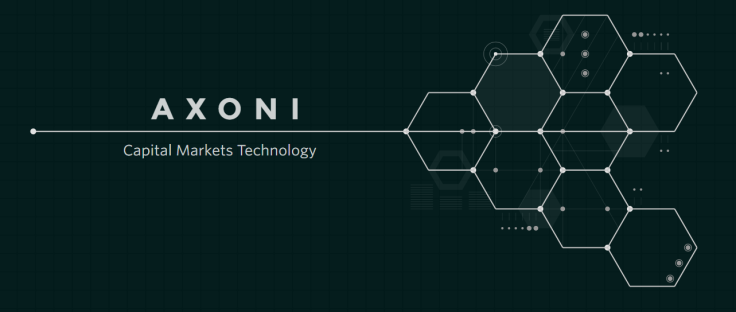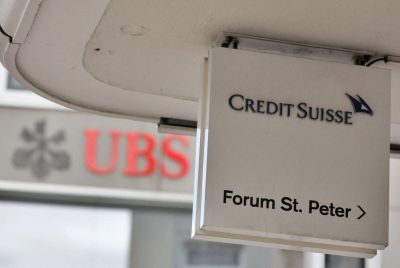Axoni delivers blockchain equity swaps with Barclays, Citi, Credit Suisse and JP Morgan
The smart contracts for equity swaps project also featured Thomson Reuters, IHS Markit and Capco.

Enterprise blockchain technology firm Axoni has completed a test of OTC smart contracts for equity swaps, involving Barclays, Citi, Credit Suisse, JP Morgan, as well as IHS Markit, Thomson Reuters and Capco.
The project, led by Axoni, tackled automated lifecycle management and synchronisation of single stock, index, and portfolio swaps. For certain types of equity swaps, independently-built swap systems at each major dealer require buyside firms to create complex, bespoke connectivity, which involves the tracking of equity prices, Libor rates, corporate actions and various tax implications.
Axoni CEO Greg Schvey said: "Each party's portfolio is different, so the markets that are made on these swaps are generally customised by dealers for the individual clients. Not only is it costly to maintain these systems, but you also frequently have what's known as a payment break; one party thinks they are supposed to receive X, but their counterparty believes they owe Y. Reconciliation on this is some of the most complex, difficult and costly in the industry."
The DTCC's Trade Information Warehouse exists for credit derivatives, but there's nothing like that in the equity swaps world because it is inherently a distributed market structure. While a centralised system has historically not fit well, a distributed blockchain design could be a better fit.
"What we are talking about here is not only reduction in reconciliation costs or the risk of a payment not being made on time because of disputes over what it's meant to be, but also a standardised framework for firms to connect into - even if the swaps remain custom," said Schvey.
In early September, the participants in this equity derivatives proof-of-concept conducted a diverse set of 133 structured test cases to assess the functional and non-functional capabilities of the blockchain technology. At the conclusion, Axoni's software achieved a 100% success rate across all tests.
Smart contracts were generated from simulated legal confirmations sourced from MarkitSERV or trades submitted by dealers on the distributed network, resulting in a synchronised, golden record of each transaction.
Historically a gold record for any OTC trade has required a trusted third party like the DTCC or a clearing house. "Using a blockchain you have a reliable record of who signed to the transactions and when each action was taken, so what you end up with is this distributed data store with a valid, provably gold version of the trade."
"We also took in market data feeds from Thomson Reuters to facilitate automated, synchronized life cycle calculations like accruals and margin payments related to changes in prices and corporate actions." said Schvey.
Disputes can be a thorny issue in the brave new world of automated financial smart contracts. When entering into equity swaps, generally single name, total return swaps, or index swaps can be done through a MarkitSERV confirmation which acts as a record of the original state of the trade.
"You also have what is known as an affirmation model directly between parties. Today what often happens in the equity swaps market is a lot of the larger dealers will basically send a batch file to their clients at the end of the day and, unless the clients dispute it, that becomes the record," said Schvey.
"So it's a bit lopsided in that sense, but you generally have some initial record of what was supposed to happen. The difficulty comes when you disagree. You might be three weeks into a set of calculations and start to disagree about how you got there and then you have to start breaking that down, you have to go back and manually recalculate it."
"In the world of blockchain, disputes actually become much easier because you are both processing literally the same code in the same interpretation environment. Should there be any sort of issue, you both have transparency into the individual messages that updated the state of that contract. Both parties can easily reference not only the original state of the contract, but everything that has happened to it since then," said Schvey.
Since the 2008 financial crash (in which OTC contracts played a significant role) there has been a wave of regulation and migration towards central counterparty clearing (CCPs). Blockchain transparency is something the regulators will appreciate. Schvey said it was possible to give the regulator a system-wide view, while maintaining privacy among all but the parties to a trade.
He said: "During the testing, we put more than a million active trade contracts onto the network, and then we ran hundreds of thousands of new trades and updates in a matter of minutes. We were actually able to query that data on a system-wide view in real time. We are talking about response times measured in milliseconds for complex analytics, in terms of the speed, accuracy and timeliness of data that you can provide for a regulator that might want to see things happening."
The working group also conducted more than 50 tests of the underlying Axoni Core infrastructure, such as adding and removing permissions for participants, and the ability to update the protocol in a simulated live environment.
Schvey explained the process of smart contract automation in these types of environments is becoming smoother with each project. This project ran for four months, with fortnightly meetings with all the firms. The software was installed by the firms on premise or in cloud environments. At the end of the period all participants spent two days going through over 130 test cases.
"We are talking about command line interactions, validating things with a graphical interface, running their own API queries. We proved out the consensus mechanisms: does it quickly and validly achieve consensus on what is a valid message, and does it update everybody's record appropriately and at scale?"
"We also did things like yank a node off the network, and see what happens when the entity that was processing the latest transaction is taken off the network to make sure stability is maintained. This wasn't a basic demo or agreement to try something in the future, but rather a thoroughly tested implementation to vet the viability of this technology " he said.
Richard Evans, Head of Equities for EMEA at Barclays Investment Bank, said: "Industry collaboration is key in driving blockchain innovation and Barclays is keen to remain at the forefront of this. In this project, our investment bank's technology teams and CTO Office participated in collaborative testing of equity swaps smart contracts using simulated trades. We look forward to further experimentation and innovation to bring the potential benefits of smart contracts technology to our clients."
Lee Braine, CTO Office at Barclays Investment Bank, added: "This experiment adds to a growing number of successful proofs-of-concept and experiments that we have participated in concerning blockchain, distributed ledgers and smart contracts. We are now prioritising the use cases for this technology that have potential to provide significant business value. In particular, we are looking for opportunities to apply smart contracts and shared ledgers to drive process simplification including increasing both standardization and the degree of straight-through-processing. Such innovative optimizations should provide opportunities to rationalise operating platforms, enabling cost reductions whilst improving quality."
Roman Eisenberg, Global Head, Prime Services Technology, Credit Suisse, said: "The proof of concept has shown that blockchain technology lends itself well to solving for the operational complexity and volumes of Equity Swaps lifecycle processing."
© Copyright IBTimes 2025. All rights reserved.






















